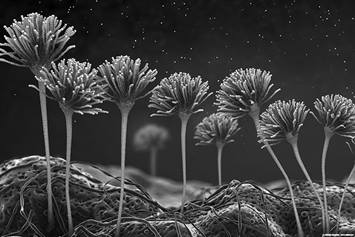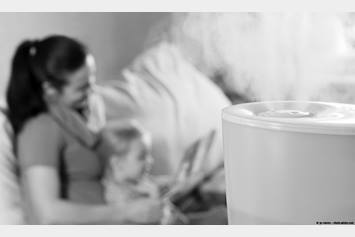Allergy to Mold
Mold lives in damp, dark and warm places. Mold can grow on anything from old books to dead leaves or straw.
Mold is a fungus that can be found almost anywhere, both indoors and outside. There are many different types of mold. Only a few cause an allergic reaction.
Mold seeds (or spores) get into the air and are then breathed in. For children at risk, this can cause allergy-like symptoms or trigger breathing problems like asthma.
Mold lives in damp, dark and warm places. Mold can grow on anything from old books to dead leaves or straw. Outdoor mold thrives best in the fall and spring because of warm temperatures and lots of moisture. It can grow indoors year-round in places that stay moist or wet.
Signs and Symptoms
Symptoms of a mold allergy vary from person to person but may include:
- Itchy nose, frequent sneezing, stuffy nose (congestion)
- Watery, itchy eyes
- Coughing, wheezing, or shortness of breath
Treatment and Prevention
Your child's doctor may suggest an over-the-counter (OTC) medicine to help improve symptoms. Or, the doctor may prescribe medicine. Always read the label to know the right dose for your child.
The best way to prevent an allergic reaction is to keep your child away from mold. Below is a list of places to avoid and tips on what you can do to reduce mold from growing in or near your home:
Inside the House
- Keep the air dry and improve ventilation (airflow).
- Set humidity control to 50 percent or lower (Picture 2). Check the filters on humidifiers and air conditioners two times a year.
- Keep doors open between rooms to increase airflow.
- Do NOT use a vaporizer or humidifier.
- Avoid attics, closets and dusty areas.
- Get rid of clutter and piles.
- Throw away old newspapers, magazines, and books.
- Help make the basement dry.
- Use a portable dehumidifier. Empty it daily or connect it to a continuous drain.
- Bathrooms
- Use an exhaust fan or keep a window or door open when showering.
- Clean shower curtains, tubs, and tiles with products that kill mildew.
- Remove carpeting that can get wet.
- Check under sinks and behind toilets for leaks and fix them.
- Kitchen
- Clean refrigerator drip trays and door gaskets.
- Avoid using sponges, or clean or replace them often.
- Laundry room
- Do not leave damp laundry in piles.
- Leave the washer door open after using.
- Clean the gasket in the door of front loading washers.
- Family room
- Use an artificial Christmas tree if possible.
Outside
- Garage
- Do not sweep the cement floor when your child is around. One-third of cement dust is mold.
- Leaves and grass
- Clean up areas of the yard where leaves, cut grass and weeds could collect and rot.
- Avoid raking, burning or jumping in dry leaves.
- Roof and gutters
- Inspect and repair roof and gutters for leaks.
- Keep gutters and downspouts clear and flowing away from the house.
Farming Areas
- Keep out of barns and silos.
- Stay away from hay, straw, and peat moss.
- Avoid combining and shoveling grains.
Call the doctor if:
- Symptoms do not improve or if they worsen, even when your child is taking medicine regularly.
- Your child has a fever.
- Your child has trouble breathing
Helping Hands Patient Education Materials
Written and illustrated by medical, nursing and allied health professionals at Nationwide Children's Hospital, Helping Hand instructions are intended as a supplement to verbal instructions provided by a medical professional. The information is periodically reviewed and revised to reflect our current practice. However, Nationwide Children's Hospital is not responsible for any consequences resulting from the use or misuse of the information in the Helping Hands.
HH-I-5 | ©1976, 4/02, revised 10/18, Nationwide Children’s Hospital



